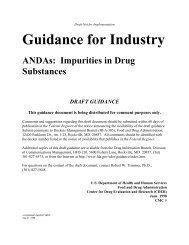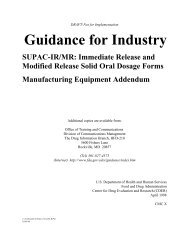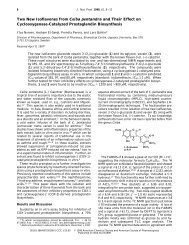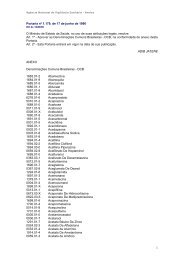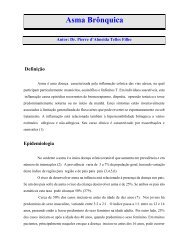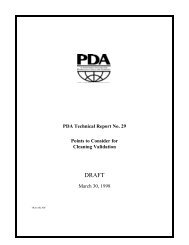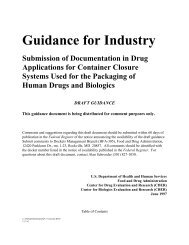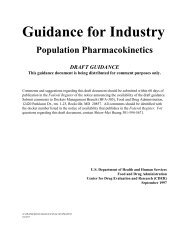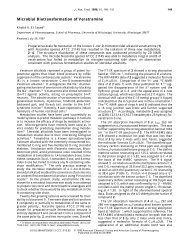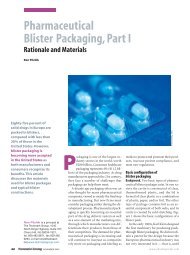Bioanalytical Methods Validation for Human Studies - Pharmanet
Bioanalytical Methods Validation for Human Studies - Pharmanet
Bioanalytical Methods Validation for Human Studies - Pharmanet
Create successful ePaper yourself
Turn your PDF publications into a flip-book with our unique Google optimized e-Paper software.
Draft — Not <strong>for</strong> Implementation<br />
those obtained with an aqueous solution of the analyte at a concentration near the limit of<br />
quantitation (LOQ).<br />
Any blank sample with significant interference at the retention time of the drug,<br />
metabolites, or internal standard should be rejected. If more than 10% of the blank<br />
samples exhibit significant interference at these retention times, additional matrix blank<br />
samples should be tested. If more than 10% of this subsequent group of blank samples<br />
still shows interference, the method should be changed to eliminate the interference.<br />
Potential interfering substances in a biological matrix include endogenous matrix<br />
components, metabolites, decomposition products, and, in the actual study, concomitant<br />
medication. Potential interference from nicotine and common OTC drugs and metabolites,<br />
such as caffeine, aspirin, acetaminophen, and ibuprofen should be routinely tested. If the<br />
method is intended to quantitate more than one analyte, each analyte should be injected<br />
separately to determine its retention time and to ensure that impurities from one analyte do<br />
not have the same retention time as another analyte.<br />
B. Calibration Curve<br />
Calibration is the relationship between instrument response and known concentrations of<br />
the analyte. A calibration (standard) curve should be generated <strong>for</strong> each analyte in the<br />
sample. A sufficient number of standards should be employed to adequately define the<br />
relationship between concentration and response. A calibration curve should be prepared<br />
in the same biological matrix as the samples in the intended study by spiking with known<br />
concentrations of the analyte. Precautions should be taken to avoid precipitation while<br />
spiking the biological matrix. The number of standards used in constructing a calibration<br />
curve will be a function of the anticipated range of analytical values and the nature of the<br />
analyte/response relationship. Concentrations of standards should be chosen on the basis<br />
of the concentration range expected in a particular study. A calibration curve should<br />
consist of a blank sample (matrix sample processed without internal standard), a zero<br />
sample (matrix sample processed with internal standard), and five to eight non-zero<br />
samples covering the expected range, including lower LOQ. Blank and standard zero<br />
samples should not be used in the calibration function, but should only serve to evaluate<br />
interference. Additional factors in developing a calibration curve relate to LOQ and<br />
linearity.<br />
1. Limit of Quantitation (LOQ)<br />
The lowest standard on the calibration curve should be accepted as the limit of<br />
quantitation if the following conditions are met:<br />
j:\!guidance\2578dft.wpd<br />
12/14/98 4



